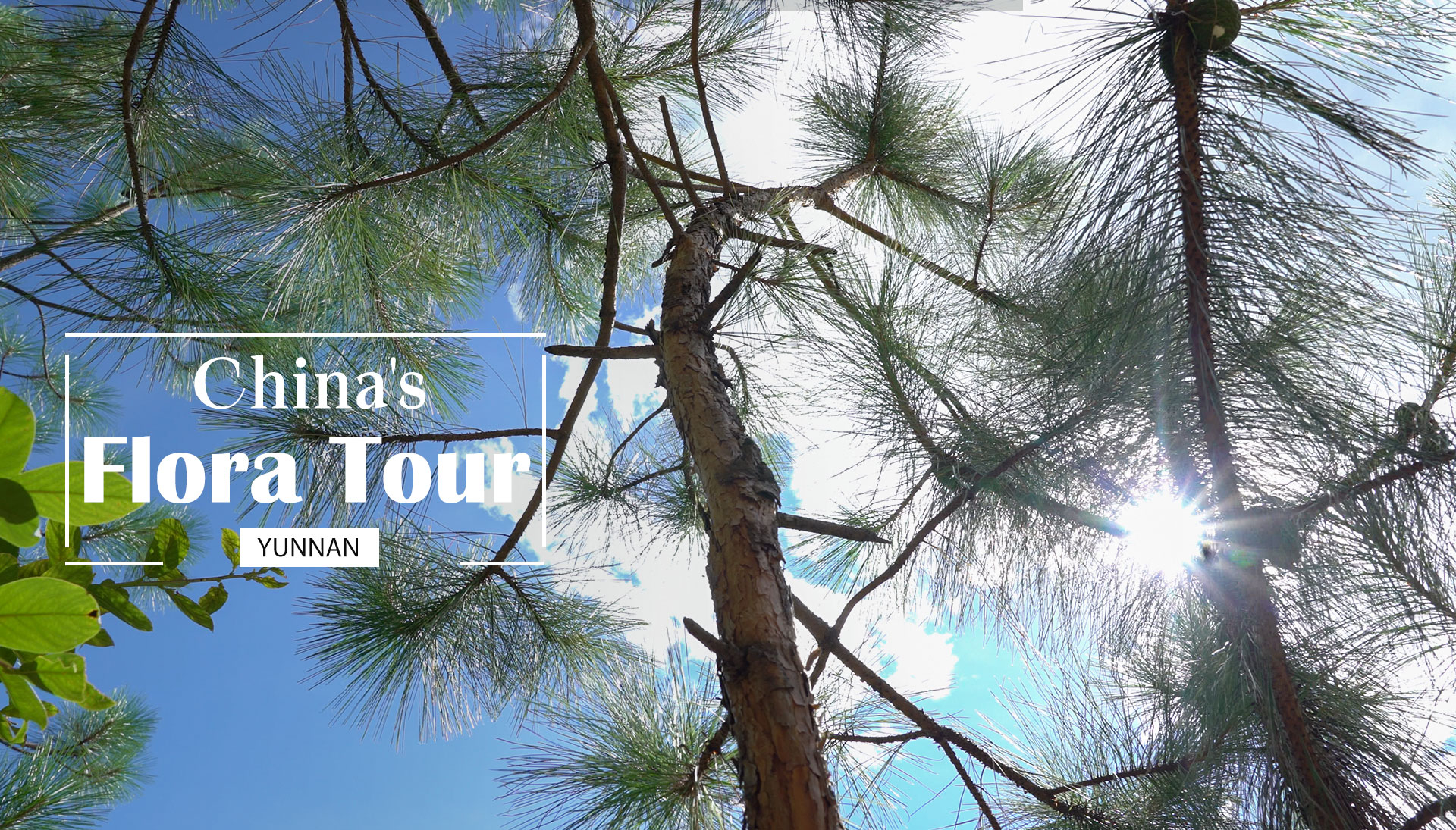

The Yunnan snub-nosed monkeys in Weixi County, in southwest China's Yunnan province have welcomed an old friend this summer, Long Yongcheng, a leading scientist who has dedicated most of his life to the Yunnan snub-nosed monkey conservation and research.
Instead of studying his "snubbies", this time he is challenging an authoritative scientific publication describing the plants native to China called Flora of China or Republicae Popularis Sinicae (FRPS). Long believes the classification of the Yunnan pine (Pinus yunnanensis) and Gaoshan pine (Pinus densata) in the publication should be the same species.
Both endemic to southwest China, Yunnan pines and Gaoshan pines often mix and grow in the same forest. One of the best ways to distinguish them is from their pine needles.
Looking closely, you can notice the Yunnan pine has three needles per fascicle, two in rare circumstances. Gaoshan pine is the other way round, it has two needles per fascicle with few cases in which it has three.
However, Long believes the difference between two pines are caused by their adaptions to different altitude. Gaoshan pine grows in an elevation of 2,600 to 4,000 meters above sea level, higher than Yunnan pine (600 to 3,100 meters).
As former Chief Scientist for China Program of The Nature Conservancy (TNC) and the former chairperson for China Primatology Society, Long never lost his curiosity about nature and the rigorous attitude towards science after retirement.
He is leading a group of students to measure these pines including the diameter and volume of the needles. After that, he will analyze the DNA chloroplasts and methylations to arrive to a further conclusion.
Read More:
China's Flora Tour: Yunnan-An 'early spring' hidden in the summer of Shangri-La
China's Flora Tour: Yunnan-Hidden treasures of tertiary relict plant
China's Flora Tour: Yunnan-Don't judge a flower by its look
China's Flora Tour: Yunnan-A purple medusa living on the rocky mountain slopes
China's Flora Tour: Yunnan-Touch the sky, the colorful poppy in the Himalayas
(Video filmed by Yang Yang, edited by Xing Fangyu. Cover image designed by Qu Bo.)
(If you want to contribute and have specific expertise, please contact us at nature@cgtn.com)

Copyright © 2018 CGTN. Beijing ICP prepared NO.16065310-3
Copyright © 2018 CGTN. Beijing ICP prepared NO.16065310-3